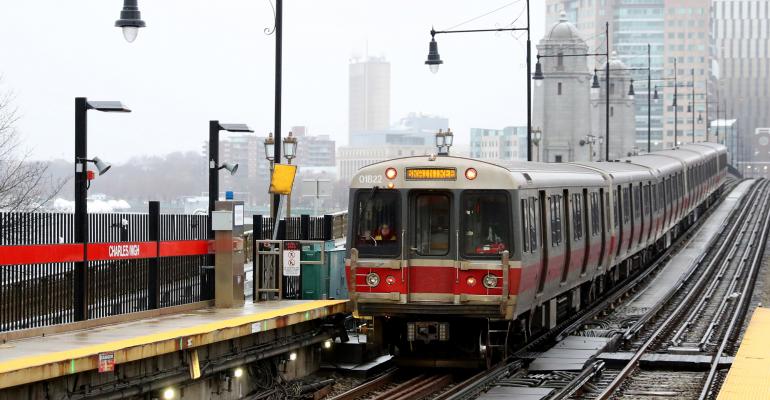(Bloomberg) -- With commuters slowly coming back and Congress considering a major infusion of cash for public transportation, mass-transit operators suddenly have a rare moment to invest for the future. But looking out over a sea of dire problems—including aging infrastructure, a backlog of repairs and the need to rebuild ridership in a Covid-scarred world—how is a system manager to decide what to tackle first?
Researchers using an in-depth case study of the Massachusetts Bay Transit Authority in Boston have come up with an equation to prioritize repairs. Their quantitative formula breaks new ground by adding two variables system managers haven’t always considered: threats from climate change, and making the systems more equitable by protecting the most vulnerable users.
Jesse Keenan, a professor at Tulane University and a co-author of the report, said that cities have historically approached infrastructure management from an engineering perspective, which means hardening the system’s weakest points against catastrophic events. To social scientists, however, resilience means ensuring that the most vulnerable communities will continue to be served. The goal of this latest paper is to help city managers balance both.
“It's critically important to prioritize the needs of historically marginalized communities,” Keenan said. Not only do they make up “a mountain of the ridership,” they’re also hurt the most when the system fails, “even for just an hour or two. That’s lost wages and extra childcare costs,” he said.
In Boston, for instance, coastal flooding exacerbated by climate change means that a big storm could render half the subway system inoperable by the end of the decade. But even that threat pales in comparison to the likelihood of routine service interruptions and delays caused by steady sea-level rise in coastal areas, according to a flooding model developed for the study. Many parts of Boston’s system most vulnerable to flooding also serve low-income communities, which are particularly dependent on good service for mobility to and from jobs and childcare.
In recent years municipal transit agencies haven’t had a lot of free money for new projects, but that may be about to change. Transit agencies received $30.5 billion in pandemic relief from the American Rescue Plan passed in March. This month the House Transportation and Infrastructure committee voted to advance a major transportation bill that would provide another $109 billion, part of President Joe Biden’s infrastructure push.
Jon Carnegie, executive director of the Alan M. Voorhees Transportation Center at Rutgers University and an expert in transit resilience, said that virtually all big-city transit systems have begun to execute on climate plans that go even beyond sea-level rise. “It’s about shade, air conditioning, impacts on the transit workforce,” he said. Many agencies are also making efforts to take marginalized communities into account, using socioeconomic conditions as criteria for prioritizing investments and working with local businesses and institutions to do public outreach.
But smaller systems have hardly invested in climate resilience at all. The Biden administration’s calls for environmental justice may signal more funding for resilience with an emphasis on equity, Carnegie said, especially as the U.S. emerges from Covid-19. “The pandemic laid bare some of the patterns of injustice that exists around the country for decades,” he said. “There’s a unique opportunity now to understand where those patterns are and how they reflect patterns of access or lack thereof.”
That’s what Keenan and his co-authors say makes their work especially urgent. In Boston’s case, they found that money currently allocated for expansion would be put to better use improving the flood drainage around specific high-traffic stops in low-lying areas such as the JFK/UMass station in Dorchester, an area that also has a large low-income population.
In response, MBTA spokesperson Joe Pesaturo said that the agency “has been prioritizing climate resiliency into our capital funding programs and building resiliency into all projects.” He added that the MBTA worked closely with the Transit Lab at the Massachusetts Institute of Technology to develop a climate change modeling tool that will help it assess vulnerabilities. “With these assessments, we will be able to identify the improvements that best address the impacts while ensuring that we address the equity considerations on our riders,” he said.
How to resolve the competing demands of infrastructure-hardening and system expansion, Carnegie said, is among the most vexing questions transit agencies face. But it also points to a larger reality: the impacts of climate change will be weathered not by specific government agencies or jurisdictions, but by entire regions.
“Yes, transit agencies need to contribute to solutions to things like inundation,” Carnegie said. “But it’s really a question of how all of Boston becomes resilient to sea-level rise. It’s not just the MBTA’s capital program alone.”
To contact the authors of this story:
Leslie Kaufman in New York at [email protected]
Laura Bliss in San Francisco at [email protected]
© 2021 Bloomberg L.P.





